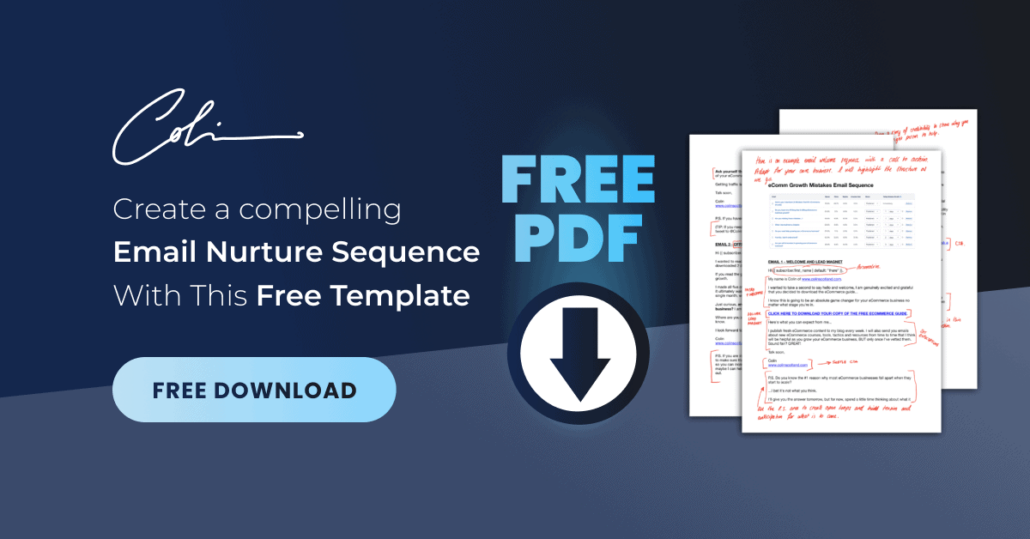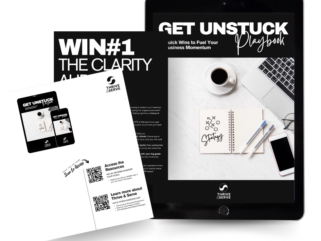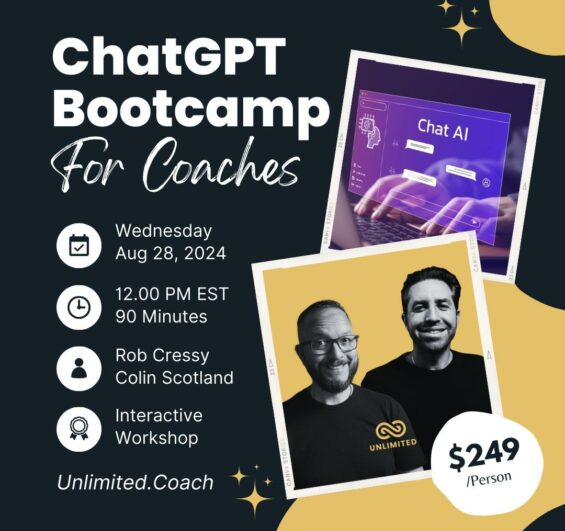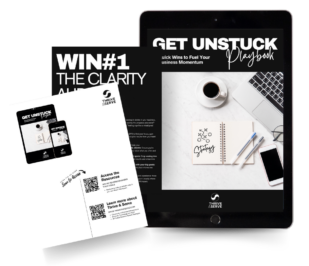Email nurturing using email sequences is one of the most overlooked, yet most effective, ways to grow your business. It’s not just about sending a one-time email and calling it a day. Email nurturing is essentially an email sequence, sent over the course of weeks or months, that keeps your leads engaged and moving towards becoming clients.
This is called 'lead nurturing', much like a farmer will tend to his crop, you nurture your leads by sending email content over time. It is a very powerful and often overlooked form of marketing. In fact, I would go so far as to say that lead nurturing via email is the hidden engine of many successful businesses. Here’s how to write an email nurture sequence that actually works.
The Beginner's Guide to the Email Nurture Sequence
Here is a comprehensive guide to creating an email nurture sequence. From proper content to format, the sequence is broken down with examples of what to include from successful marketing campaigns and years of testing.
Why do I bring up this topic now? Well, you see, I’ve spent the last 20+ years studying marketing communications, and the last five in email marketing and lead nurturing specifically, analyzing the data and testing my hypotheses. I have discovered that email marketing, despite being around for over 30 years, is still a massively unexplored area by lots of businesses. I'm also a bit of an email geek, I love to collect email sequences and study how they have been written, the psychology at play, and how they invoke a reaction. A well-written email sequence really is a thing of beauty.
I’ve lost count of the number of shoulder shrugs and puzzled looks I’ve seen when I ask: “how do you communicate with your current clients?”, or"when did you last send an email sequence out to past clients?" Some really successful business owners completely miss the boat here, never communicating beyond the transaction. Allowing clients to simply drop off a cliff after they have purchased. Let alone nurturing leads before they are ready to buy.
The truth is that many businesses, especially small businesses, are barely scratching the surface when it comes to understanding and mastering email marketing and the lead nurturing process.
The 3 Phases of Email Marketing
And it’s not just about nurturing people to buy. Oh no, email marketing is much bigger than that. Think about the whole journey your clients go on in three phases: Leads, Prospects, and Clients.
What’s the difference? Leads are at the start of their journey with you, they are not ‘actively’ making a decision about a purchase. Leads are lost souls searching for solutions to their problems. This is the very top of what in marketing is called a ‘funnel’.
You may have heard the terms lead magnet, opt-in bribe, or freebie. These are enticements, valuable pieces of content used to persuade visitors to give you their email addresses in exchange for free, valuable information. Once you have a contact's email address, then the real work of relationship building can begin. Here is an example of a lead magnet...
Stuck on what to include in your email sequence? Check out the free template I created for you.
Prospects are aware of their problem and actively seek a solution. They are in the market, they have something that separates them from the pool of leads called buyer intent. Buyer intent is when things get serious, this is where we are weighing up our options in readiness to buy something.
Clients are, well, clients. They have made the decision and gone ahead and purchased. But this is not the end of the journey, it is only the beginning… Clients are 60-70% more likely to make repeat purchases. Your clients are your voice in the world, championing your cause, referring friends, and buying more of your products. Think about: Customer service, upselling and related products, repeat business, referrals, social shares, and testimonials. This is where businesses are built.
All three of these areas require consideration in your email nurture sequences, not just nurturing leads to prospects. Don’t make the mistake of ignoring your most precious asset, your clients.
Getting Started With Lead Nurturing Using Email
Email nurture can happen on autopilot, at scale.
Lead nurturing email sequences and great content allow you to communicate in a very personal way with everyone who enters your world.
When creating an email nurture sequence, it’s important to think of it as more than a one-time piece of marketing. You need to think of it as an ongoing campaign, something that you will iterate, add to and develop over time. It's called an email sequence, after all, not just an email
The email sequence itself is defined by what the subscriber needs, not what you’re hoping they’ll buy. Read that sentence again because it is important.
If they don’t need what you’re offering today, they may need it tomorrow. One of the most common challenges is to know what questions and inquiries the subscriber will have and how to respond. What questions do they have? Where do they hang out online? Once you’ve determined their main “dollars, pound, and unit” of the content they consume, this is what you will be serving.
Think about it this way: If you sell a suit, and your first email is a clothing ad, you’ll probably be banging your head against the wall wondering why you’re not getting sales. You haven’t built a relationship. You haven’t delivered any value. Instead, how about a guide to what suits celebs are wearing this season, a guide to the right tailored fit for your body shape, or how the right suit can land you that dream job/relationship… These are just a few off-the-cuff (pun intended) examples of how you can and should switch your focus from the sale and ask yourself: “What content could I create and share that would make my client’s life better?”
Get started now by making a list of valuable content you have or could create related to what you do. What questions are people asking? Type it into Google and check the related search terms.
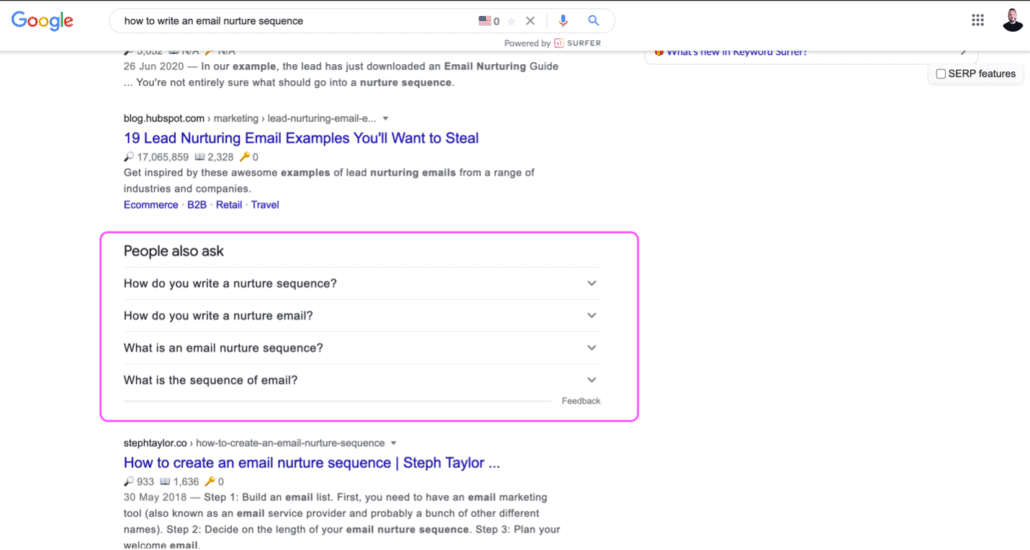
Hang around in Facebook groups and listen to conversations. All of this information is freely available all around you. This content can form the basis of topics for your email sequence, and also content you can create. An email sequence enriched with video content, audio, and links to blog posts will make a much richer experience for your audience after all.
Who do you want to nurture?
Start with the main group you want to work with—your ideal prospects. You want to capture prospects who:
- Are actively looking for what you do.
- Are willing to pay for your product.
- Would benefit from your services.
The more you know about them, and what their world looks, sounds and feels like, the better you can communicate and create engaging content to nurture these leads until they are ready to take the next step in the buyer journey. Creating valuable content is the essence of rock-solid lead nurturing.
What should you talk about in your emails?
Research has shown that the most effective lead nurturing emails are packed with emotional power. In other words, the more emotionally engaging your email sequence is, the better.
When choosing the subject matter for your emails, make sure to include subjects that make people laugh, cry, feel inspired, and so on. While you want to include subject lines that will grab your leads’ attention, the subject line itself won’t make a difference. If we can increase engagement then the subject line is a pretty big deal since it means more people will open our email and engage with the content. But then the whole picture is bigger than just the subject line.
Write an email sequence that makes your readers feel something.
The best emails are the ones that make the reader feel something, which they then remember and think about for the rest of the day.
While you will be weaving emotion into your emails, what should you actually include in a good email nurture sequence? Here is a list of emails to include in your nurture sequence to give you some ideas for what to include in your own lead nurturing email sequence:
- Welcome them into your world
- Tell your origin story
- Share success stories from clients you’ve helped
- Bust a myth about what you do (Most people believe this…)
- Share your most valuable content
- Share your process – how you can solve their problems
- Answer the most common questions
- Invite the contact to take the next steps – the CTA (Call To Action) ‘Do This’
- Re-Engage – Hey did you see this?
You can also check out this article I wrote on how to create an email nurture sequence. I even created a free training on how to create an email nurture sequence too.
Write a subject line that gets your emails opened
Keep these things in mind when choosing your email subject lines: A subject line should be specific and should also illicit curiosity.
The goal of a Great Email Subject Line
The goal of a great subject line is to grab attention and get people to read the content. From a psychological perspective, this happens when you pique interest, pose a question, or create what is called an ‘open loop’. “Did you see this FIRSTNAME?” is an example – FIRSTNAME is where you personalize the email so it speaks directly to the contact.
Here are some ideas to help you create an interest-piquing subject line as food for thought:
- Do you do this?
- Are you missing out?
- This isn’t good…
- Wow! That was intense…
- I checked it twice…
Think about how the whole email sequence fits together too. Make sure there is a narrative, a structure, and a flow to the whole thing.
How often should you send emails?
As a general rule, the answer to this question is simple: As often as you can. What, you ask? Why, as often as you can? If you don’t email your prospects over a period of time, they will forget who you are, or the timing might not be quite right. There’s a whole host of reasons.
Since we can’t predict the exact buyer journey it pays dividends to create a wonderland of valuable and engaging content that your contacts can enjoy, and when the time is right, the pathway to becoming a client is always there. All roads lead to Rome. Rome is the start of the ‘Client’ part of the customer journey.
I always recommend that marketers aim for an email nurturing sequence of at least once a week, sometimes every day, or every couple of days. It really does depend on what is called the ‘buying cycle’ of what you sell. Some high-value buying decisions can take months, so bombarding someone’s inbox every day for months would be overkill. An email every week wouldn’t.
There is a cadence you need to find and the best way to find it is to test test test. Start with a frequency you feel comfortable with and go higher. Then let the data tell you the rest. Are the emails being opened? Do we have unusually high unsubscribe rates? All of the answers lie in the testing part of creating your email sequences.
Test Your Email Sequences
Business-growing email sequences aren’t born perfect, they evolve and develop over time with testing and constant iteration.
If you want to have higher engagement rates from your leads, then it’s really worth having an email sequence that the recipient will be able to relate to and is appropriate for the thing they are buying. Making the pitch in your lead nurturing email is also important, there is an intelligent way to sell without selling in your email nurture sequences.
Don’t rush to get to the CTA (Call To Action) either. It's a critical part of the flow for sure, but don't force a call to action at every opportunity. There is a rhythm and dance to create a compelling email nurture sequence, learn the steps. The call to action can always be there subtly (in the PS area of the email, for example:
Did you know there is one thing you MUST include in every email you send?
I’ll tell you what it is in tomorrow’s email.Until tomorrow…
Colin
Marketing Coach
PS Looking for help right now? I’d love to offer you a free 30-minute Clarity Call. Click here to set that up (link to book a call)
What should your emails look like?
I recommend using a personal approach every time. Plain text emails work well because they feel real. Fancy templated emails look like, well, templated emails. They might be nice to look at, but they often have poor open rates because they don’t create a personal connection in the same way. The secret is to express yourself in your emails. There’s nothing wrong with having your logo in the email and even a picture of you in the signature.
No hard and fast rule here except to make it feel personal. Your emails should be sent from a person, not a brand. ‘Hey, it’s Gina from Apple here…’ See how that has a nice, personal feel to it.
Yes, you can make your emails look pretty, but ultimately it’s about finding the right balance and making a personal connection with your list.
Conclusion
Create at least TWO email nurture sequences. One that nurtures new clients is called an ‘onboarding sequence’, and one that nurtures leads and prospects towards becoming a client is often called a ‘welcome sequence’ or ‘lead nurture sequence’.
Set them to work. Create compelling content and continuously iterate your sequences so you can nurture prospects, leads, and clients on autopilot. While you sleep relationships and connections are being made and your business will grow.
Remember, your client is the most important person in your company. Help your clients succeed and they’ll help you succeed. Put them at the center of everything you do. Create email nurture sequences that help them to succeed, and point them to your products and services as the ideal solution to their problems along the way.
Now go write some compelling and helpful emails…

